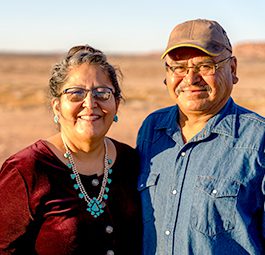Research and Reports
Life with Nasal Polyps
Nasal polyps are small, non-cancerous growths on the inner lining of the nose or sinus cavities. Nasal polyps are shaped like hanging grapes or teardrops, and they are usually soft and painless.
You may develop nasal polyps from chronic (long-term) inflammation and swelling in your sinuses. People with respiratory diseases, such as asthma, chronic rhinosinusitis, or aspirin-exacerbated respiratory disease (AERD), have a greater chance of having nasal polyps. If you do not get treatment for nasal polyps, they can cause long-term problems in your nose and sinuses.
Nasal polyps are considered a subtype of chronic rhinosinusitis (CRS). CRS is a common medical condition that affects 5-12% of adults. There are two major types of CRS, divided based on the presence or absence of nasal polyps (NP):
- Chronic rhinosinusitis with nasal polyps (CRSwNP)
- Chronic rhinosinusitis without nasal polyps (CRSsNP)
Around 20-30% people with CRS have nasal polyps (CRSwNP). This condition can have a major impact on your quality of life and mental health.
The Asthma and Allergy Foundation of America (AAFA) conducted a multicomponent cross-sectional needs assessment study for CRSwNP. The study aimed to understand the patient journey for nasal polyps, as well as health care providers’ awareness of and practice around CRSwNP. Results from the study are published in a new report titled Life with Nasal Polyps: The Patient Experience and Opportunities to Improve Care in the U.S.
About the Study
This study included several components:
- Social listening
- Peer-to-peer conversations with online patient community members
- Survey of patients and caregivers
- Interviews with patients and caregivers
The study sought to better understand current challenges and barriers to timely diagnosis, quality medical care, effective treatments, and access to resources for nasal polyps. The objectives of the study were to:
- Understand the current state of care for nasal polyps in the U.S.
- Understand the patient journey for nasal polyps
- Identify areas of unmet needs for patients and caregivers
The Life with Nasal Polyps report uses insights from a patient/caregiver survey (n=112) to identify and provide opportunities for improving nasal polyp care in the United States.
Key Findings
Many patients experience delays in diagnosis for CRSwNP, leading to delayed symptom relief, clinical care, and treatment.
- The majority (53%) of patients said it took more than one year to receive a diagnosis after first experiencing symptoms, including one in eight (12%) who said it took more than 10 years to get diagnosed.
- The biggest challenge to getting a diagnosis among this study group was difficulty in distinguishing CRSwNP that it was hard to tell if symptoms with were not just bad allergies or asthma.
- Other challenges to diagnosis include not recognizing their symptoms as a sign of a chronic condition, doctor not realizing there was a problem, and having trouble getting the necessary testing for diagnosis. One significant factor that can delay diagnosis is that CRSwNP symptoms mimic those with other conditions like asthma or allergies. Many interview participants reported not knowing they had nasal polyps until seeking medical help for other conditions. One in 5 (18%) said they didn’t recognize their symptoms as a sign of a chronic condition.
Standard of care is not effective for all patients, and access to newer treatments is challenging for some patients who may benefit.
- The two biggest challenges in long-term management of CRSwNP were reducing or eliminating symptoms (54%) and effectiveness of care and treatment (38%).
- The majority (76%) of patients have used nasal steroids (94%) and oral steroids (76%) at some point for CRSwNP, but some patients resorted concerns or challenges with these treatments.
- Among the pharmacological treatments for CRSwNP, patients reported biologics as having the highest utility.
- Efficacy, side effects, and doctor recommendation were reported as the 3 most important factors for patients when choosing a treatment option.
- Though patient awareness of emerging treatments was low, they are likely to participate in clinical trials if asked.
Sinus surgery is effective for some patients, but others experience a recurrence of nasal polyps even after surgery, leading to greater frustration and reduced quality of life.
- Most (56%) patients reported having at least one endoscopic surgery to remove nasal polyps, with about 3 in 10 (29%) having more than one surgery.
- Among all treatments for CRSwNP, endoscopic surgery was reported as having the highest utility.
- For some people, recurrence of polyps after surgery led to a significant impact on quality of life.
CRSwNP has a significant impact on quality of life.
- Nearly half (46%) of patients reported that nasal polyps have a significant impact on their ability to get a good night’s sleep.
- A third (32%) of patients said nasal polyps have a significant impact on their ability to exercise.
- Mental and emotional impacts are also seen, with about 1 in 4 survey respondents saying nasal polyps have a significant impact on their emotional (25%) and mental (23%) health.
Patients and caregivers acknowledge a greater need for support and resources for CRSwNP.
- Patients were dissatisfied with general awareness of nasal polyps (37%) and financial resources to support medical care (37%).
- Patients were divided on their satisfaction with social and emotional support, with about the same number of respondents satisfied with social support (24%) as dissatisfied (28%).
- Two-thirds (67%) of patients would like more information about how to manage or reduce symptoms without surgery (67%) as well as treatment options (64%).
- More than half (51%) of patients they would like more basic nasal polyps information such as what they are and what causes them.
- One-third of patients would like more information on nasal polyps drug development (35%) and clinical trial opportunities (34%).
Unmet Needs and Opportunities to Improve Care
As the landscape of CRSwNP care in the U.S. continues to evolve, AAFA recognizes the need to better understand current challenges and barriers to timely diagnosis, quality medical care, effective treatments, and access to resources—particularly among AAFA’s patient community of people impacted by comorbid conditions like asthma and allergies.
This report provides an overview of the nasal polyps journey from the patient and caregiver perspective using data gleaned from a multi-component needs assessment study. By analyzing data and common themes from the study, AAFA identified several unmet needs and areas of opportunity for improving CRSwNP care.
In this section, we summarize unmet needs that emerged from the study as well as opportunities for CRSwNP stakeholders to address needs in the following domains:
- Health care provider (HCP) education and clinical care
- Patient education and public awareness
- Treatments and patient-centered research
Recommended Citation
Asthma and Allergy Foundation of America, (2024). Life with Nasal Polyps: The Patient Experience and Opportunities to Improve Care in the U.S. Retrieved from aafa.org/nasalpolypslife.
Media Inquiries
For media and related inquiries, contact gro.afaa@aidem.
Acknowledgements
Authors:
- Sanaz Eftekhari, Chief Business Development Officer, Vice President of Research, AAFA
- Hannah Jaffee, Research Manager, AAFA
AAFA thanks the patients and caregivers who provided their time and expertise to participate in this study. The authors also thank AAFA’s Art Director, Nicole Gaghan, for the design of this report.
The Life with Nasal Polyps report is an independent research project of the Asthma and Allergy Foundation of America and made possible by support from Sanofi and Regeneron.
The views and opinions expressed in this report are those of the study participants and the AAFA authors and do not necessarily reflect the policies or positions of other individuals, organizations, or companies.














